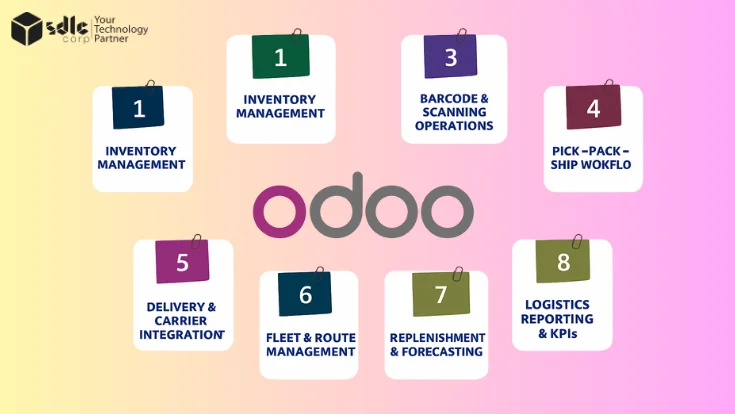Introduction
In the rapidly evolving crypto ecosystem, blockchain interoperability is a game-changer. It bridges different blockchains, allowing seamless interactions across varied networks and enhancing the flexibility and functionality of crypto exchanges. Let’s delve into how blockchain interoperability can be used effectively in crypto exchange platforms, why it matters, and the steps to integrate it into your platform.
What is Blockchain Interoperability?
Blockchain interoperability enables communication, data exchange, and interaction across multiple blockchain networks. Through interoperable frameworks, crypto exchanges can enhance user experience by enabling seamless trading, improving asset liquidity, and expanding trading options for users.
Why Blockchain Interoperability is Essential in Crypto Exchange Platforms
- Enhances Liquidity: Users gain access to assets across multiple chains, increasing available trading pairs.
- Improves User Experience: Simplifies trading by allowing assets to flow smoothly across networks.
- Boosts Security: Reduces reliance on centralized exchanges by enabling decentralized asset transfers.
- Expands Market Reach: Provides users with access to a wide array of tokens and projects on different chains.
Take Control of Your Crypto Assets!
Discover the power of blockchain interoperability to streamline trading across exchanges. Dive in today!

Benefits of Blockchain Interoperability in Crypto Exchanges
Benefit | Description |
Cross-chain Asset Transfer | Enables users to transfer assets between different blockchains seamlessly. |
Reduced Dependency on Custodians | Decreases reliance on custodians or centralized exchanges, enhancing security and control. |
Unified Trading Interface | Creates a simplified trading experience by allowing users to trade assets on various chains from a single interface. |
Increased Transaction Speed | Minimizes delays by allowing faster transactions across networks. |

Steps to Implement Blockchain Interoperability in Crypto Exchange Platforms
- Identify the Required Blockchains for Interoperability
- Assess the top blockchains you want to integrate, focusing on popular options like Ethereum, Binance Smart Chain, Polkadot, and Cardano.
- Evaluate the native features and transaction speeds of these chains.
- Select an Interoperability Protocol
- Popular interoperability protocols include:
- Polkadot: Uses relay chains for cross-chain interaction.
- Cosmos: Employs Inter-Blockchain Communication (IBC) protocol.
- Chainlink: Provides cross-chain oracles and facilitates communication.
- Tip: Choose a protocol that aligns with your security, speed, and asset compatibility requirements.
- Popular interoperability protocols include:
- Leverage Cross-chain Bridges
- Implement cross-chain bridges to allow asset and data transfers between chains.
- Examples:
- Wrapped Tokens (e.g., WBTC): Tokenized versions of assets that exist on different blockchains.
- Atomic Swaps: Allow peer-to-peer trading between different blockchain assets without intermediaries.
- Incorporate Smart Contracts
- Use smart contracts for automating transactions and managing assets across chains.
- For Ethereum-based chains, deploy ERC-20 or ERC-721 smart contracts to facilitate cross-chain functionalities.
- Pro Tip: Use smart contracts to enforce trustless transactions and enhance the security of cross-chain interactions.
- Implement Blockchain Oracles
- Blockchain oracles provide external data to smart contracts and allow off-chain data to influence on-chain decisions.
- Key Oracle Providers:
- Chainlink
- Band Protocol
- Oracles enable real-time price tracking and market data integration across networks, critical for price-sensitive trades.
- Enable Cross-chain Swaps
- Use decentralized exchanges (DEXs) like Uniswap or PancakeSwap for cross-chain asset swapping.
- Cross-chain swaps eliminate intermediaries, providing a trustless exchange experience for users.
- Optimize for Security with Decentralized Custody Solutions
- Use decentralized custody solutions to hold assets securely across networks.
- Look into multi-signature wallets and hardware wallets for added security.
Key Tools and Technologies for Blockchain Interoperability in Exchanges
Tool/Technology | Description |
Cosmos IBC | Facilitates cross-chain communication between Cosmos-based chains. |
Polkadot Relay Chains | Relay chains that interconnect different blockchains within the Polkadot network. |
Chainlink Oracles | Provides cross-chain data for smart contracts. |
Atomic Swaps | Enables peer-to-peer trades across chains without a centralized intermediary. |
Wrapped Tokens (e.g., WBTC) | Tokenized versions of assets, like Bitcoin on Ethereum, for cross-chain use. |
Best Practices for Using Blockchain Interoperability in Crypto Exchanges
- Prioritize Security: Security risks increase when interacting across chains. Integrate robust security protocols, such as two-factor authentication and decentralized custody.
- Use Reliable Oracles: Accurate and timely data from oracles is crucial for cross-chain trades. Chainlink is one of the top providers due to its reliability and security features.
- Optimize Transaction Speed: Delays can reduce user satisfaction. Consider chains with faster transaction times for quick asset transfers.
- Ensure Compatibility: Cross-chain interoperability may encounter compatibility issues. Test each blockchain integration thoroughly to avoid transaction errors.
Make Crypto Exchanges Work Together!
Find out how blockchain interoperability bridges platforms and enhances your trading experience.

Challenges in Blockchain Interoperability for Crypto Exchanges
- Technical Complexity:
- Cross-chain communication requires high technical expertise, as each blockchain has unique protocols and consensus mechanisms.
- Scalability Issues:
- Handling high transaction volumes across chains can be challenging, especially for networks with limited scalability.
- Security Concerns:
- Interoperability can introduce vulnerabilities. Use multi-signature wallets and decentralized bridges to enhance security.
- Liquidity Constraints:
- Cross-chain platforms may face liquidity challenges, which can impact asset availability and affect trading pairs.
Future of Blockchain Interoperability in Crypto Exchanges
- Expansion of Interoperability Protocols: New protocols are being developed to improve speed, security, and compatibility across chains.
- Rise of Multi-chain DEXs: Decentralized exchanges will continue to evolve, supporting a wide array of assets across numerous blockchains.
- Enhanced Security Mechanisms: As interoperability grows, focus will shift toward enhancing cross-chain security through decentralized identity verification and consensus mechanisms.
Conclusion
Blockchain interoperability is critical for modern crypto exchange platforms, empowering them to provide seamless trading experiences, enhanced liquidity, and cross-chain asset access. By understanding and implementing interoperability protocols, utilizing smart contracts, and optimizing security practices, exchanges can stay competitive and responsive to user demands in the crypto ecosystem.

















